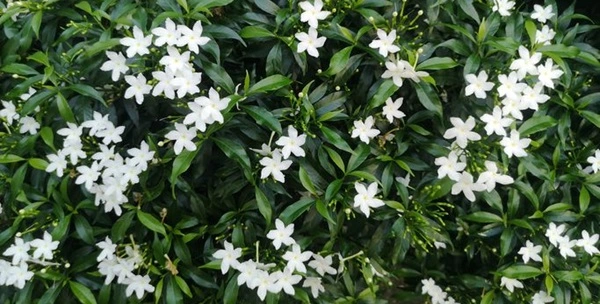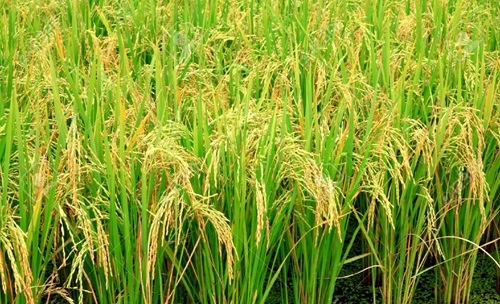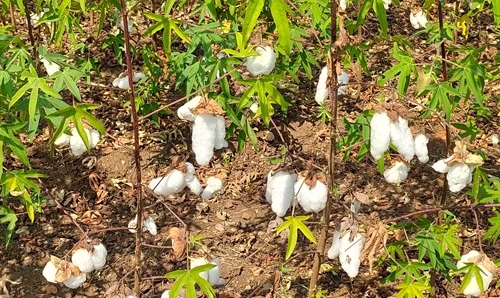Jasmine, known as “Chameli” or “Mogra” in India, is one of the most revered flowers in the country. It is valued for its fragrance, ornamental beauty, and commercial importance in industries such as perfumery, cosmetics, and aromatherapy. Jasmine also plays a significant role in Indian traditions, being widely used in religious rituals, weddings, and as garlands.
India’s favorable tropical and subtropical climate supports the growth of several jasmine varieties, each offering unique characteristics in terms of fragrance, flower shape, color, and blooming season. These varieties are cultivated for fresh flowers, essential oils, and even as ornamental plants in home gardens.
This article highlights more than 10 top jasmine varieties in India, their key features, cultivation regions, and commercial significance.

1. Jasminum Sambac (Mogra)
Jasminum Sambac, commonly known as Mogra, is one of the most popular jasmine varieties in India.
- Flower Color: White
- Fragrance: Strong and sweet
- Regions: Tamil Nadu, Maharashtra, Karnataka, West Bengal
- Characteristics:
- Small, double-layered flowers
- Blooms throughout the year in tropical climates
- Commonly used in garlands, religious rituals, and perfumes
- Uses: Fresh flower decorations, essential oil extraction
2. Jasminum Grandiflorum (Chameli)
Known as Spanish Jasmine or Chameli, this variety is widely grown for its essential oil, which has global demand.
- Flower Color: White
- Fragrance: Sweet and mild
- Regions: Karnataka, Tamil Nadu, Uttar Pradesh
- Characteristics:
- Large, star-shaped flowers
- Profuse flowering during summer
- Major source of jasmine essential oil in the perfume industry
- Uses: Aromatherapy, perfumes, and cosmetics
3. Jasminum Auriculatum (Juhi)
Juhi is a delicate jasmine variety prized for its sweet fragrance and small, star-shaped flowers.
- Flower Color: White
- Fragrance: Mild and sweet
- Regions: Tamil Nadu, Karnataka, Andhra Pradesh
- Characteristics:
- Blooms profusely during the summer and rainy seasons
- Hardy and drought-resistant plant
- Uses: Garlands, religious ceremonies, perfumery
4. Jasminum Officinale (Common Jasmine)
Jasminum Officinale, also known as Common Jasmine, is a hardy variety that thrives in colder climates.
- Flower Color: White
- Fragrance: Strong and lingering
- Regions: North India, Himachal Pradesh, Jammu & Kashmir
- Characteristics:
- Large, white, star-like flowers
- Long blooming period during spring and summer
- Uses: Home gardens, perfumes, ornamental landscaping
5. Jasminum Nitidum (Star Jasmine)
Jasminum Nitidum, or Star Jasmine, is known for its unique star-shaped flowers and glossy leaves.
- Flower Color: White with purple undersides
- Fragrance: Sweet and mild
- Regions: Kerala, Tamil Nadu, Karnataka
- Characteristics:
- Fast-growing climber suitable for trellises
- Flowers profusely throughout the year in tropical climates
- Uses: Ornamental landscaping, garden trellises, fragrant pathways
6. Jasminum Multiflora (Kunda)
Kunda, or Downy Jasmine, is a hardy jasmine variety known for its clustered flowers and bushy growth.
- Flower Color: White
- Fragrance: Light and refreshing
- Regions: Maharashtra, Tamil Nadu, Kerala
- Characteristics:
- Drought-tolerant and low-maintenance
- Small flowers blooming in clusters
- Uses: Ornamental hedges, garlands, garden decoration
7. Jasminum Humile (Yellow Jasmine)
Jasminum Humile, also known as Yellow Jasmine, is admired for its bright yellow flowers and mild fragrance.
- Flower Color: Yellow
- Fragrance: Mild and pleasant
- Regions: Himachal Pradesh, Jammu & Kashmir
- Characteristics:
- Thrives in colder regions
- Bushy and compact growth habit
- Uses: Ornamental hedges, home gardens
8. Jasminum Flexile (Wild Jasmine)
Wild Jasmine is a native variety valued for its hardiness and delicate white flowers.
- Flower Color: White
- Fragrance: Mild
- Regions: North India, Himalayan foothills
- Characteristics:
- Suitable for wild landscapes and forest gardens
- Naturally resilient to pests and diseases
- Uses: Garden landscaping, floral decoration
9. Jasminum Rottlerianum (Indian Jasmine)
Indian Jasmine is a rare variety, known for its long flowering period and highly fragrant blooms.
- Flower Color: White
- Fragrance: Strong and sweet
- Regions: Tamil Nadu, Kerala, Karnataka
- Characteristics:
- Profuse blooming under tropical conditions
- Requires well-drained soil and ample sunlight
- Uses: Fresh flowers, religious rituals
10. Jasminum Sambac ‘Belle of India’
‘Belle of India’ is a unique variety of Jasminum Sambac with elongated, pearl-like flowers.
- Flower Color: White
- Fragrance: Strong and sweet
- Regions: Tamil Nadu, Karnataka, Maharashtra
- Characteristics:
- Elegant, slender blooms arranged in layers
- Flowers throughout the year with proper care
- Uses: Ornamental gardens, garlands, perfumes
FAQs
Q1: Which jasmine variety is best for essential oil production?
A: Jasminum Grandiflorum (Chameli) and Jasminum Sambac (Mogra) are widely used for producing essential oils due to their strong fragrance.
Q2: Which jasmine variety blooms year-round in India?
A: Jasminum Sambac (Mogra) and Jasminum Nitidum (Star Jasmine) bloom profusely throughout the year in tropical climates.
Q3: Which jasmine variety is ideal for colder regions?
A: Jasminum Officinale (Common Jasmine) and Jasminum Humile (Yellow Jasmine) are suitable for colder climates like Himachal Pradesh and Jammu & Kashmir.
Q4: What is Mysore Mallige famous for?
A: Mysore Mallige is famous for its rich fragrance and is culturally significant in South Indian weddings and temples.
Q5: Can jasmine be grown in pots or containers?
A: Yes, varieties like Jasminum Sambac (Mogra) and Belle of India are well-suited for container gardening with proper sunlight and care.
Conclusion
India’s diverse climate supports the growth of a wide range of jasmine varieties, each with its unique fragrance and charm. From the widely cherished Mogra and Chameli to the regionally famous Mysore Mallige, jasmine continues to be a symbol of beauty, tradition, and commercial value in the country. Whether for ornamental use, essential oil extraction, or cultural practices, jasmine remains an indispensable part of Indian agriculture and heritage.

